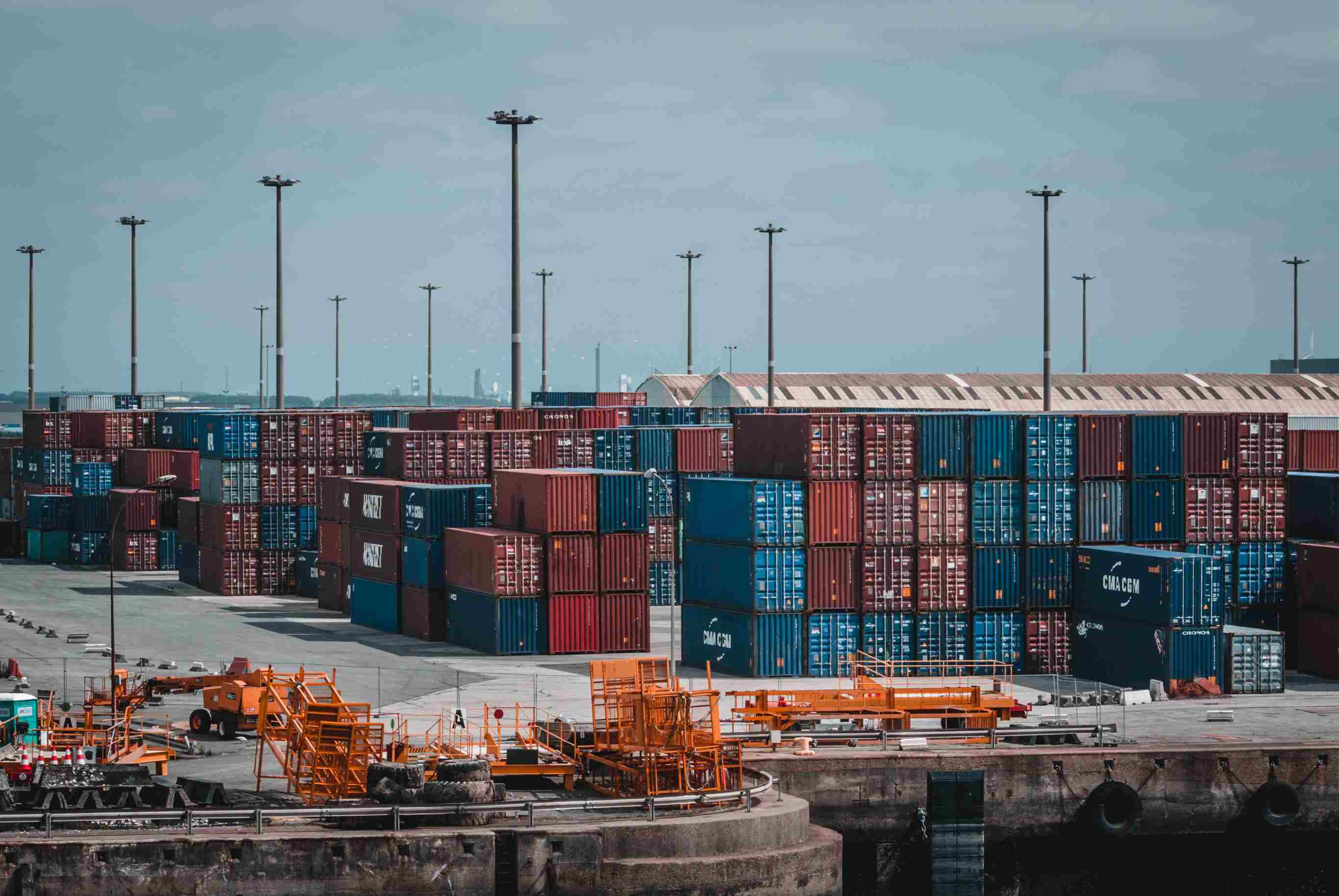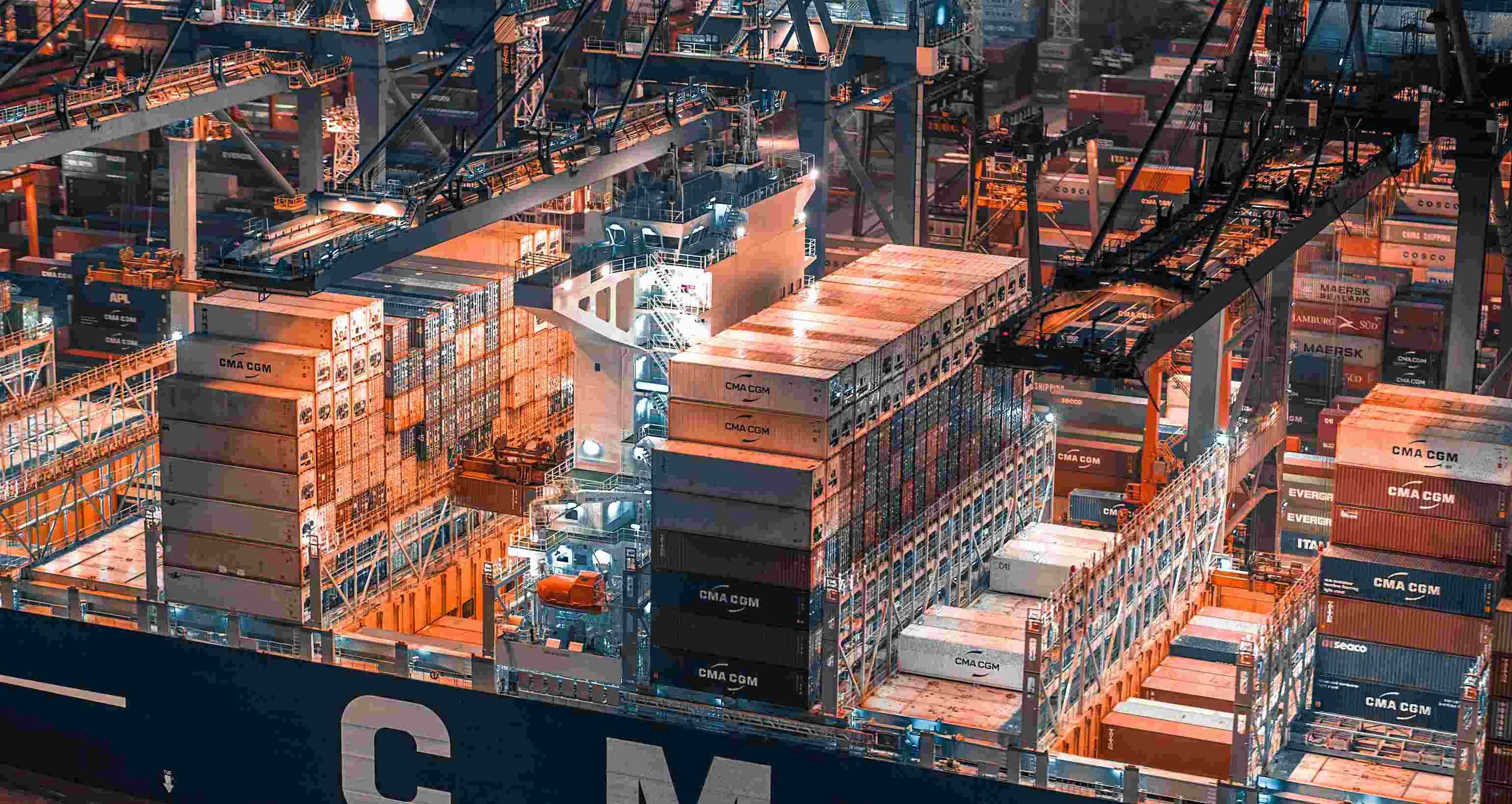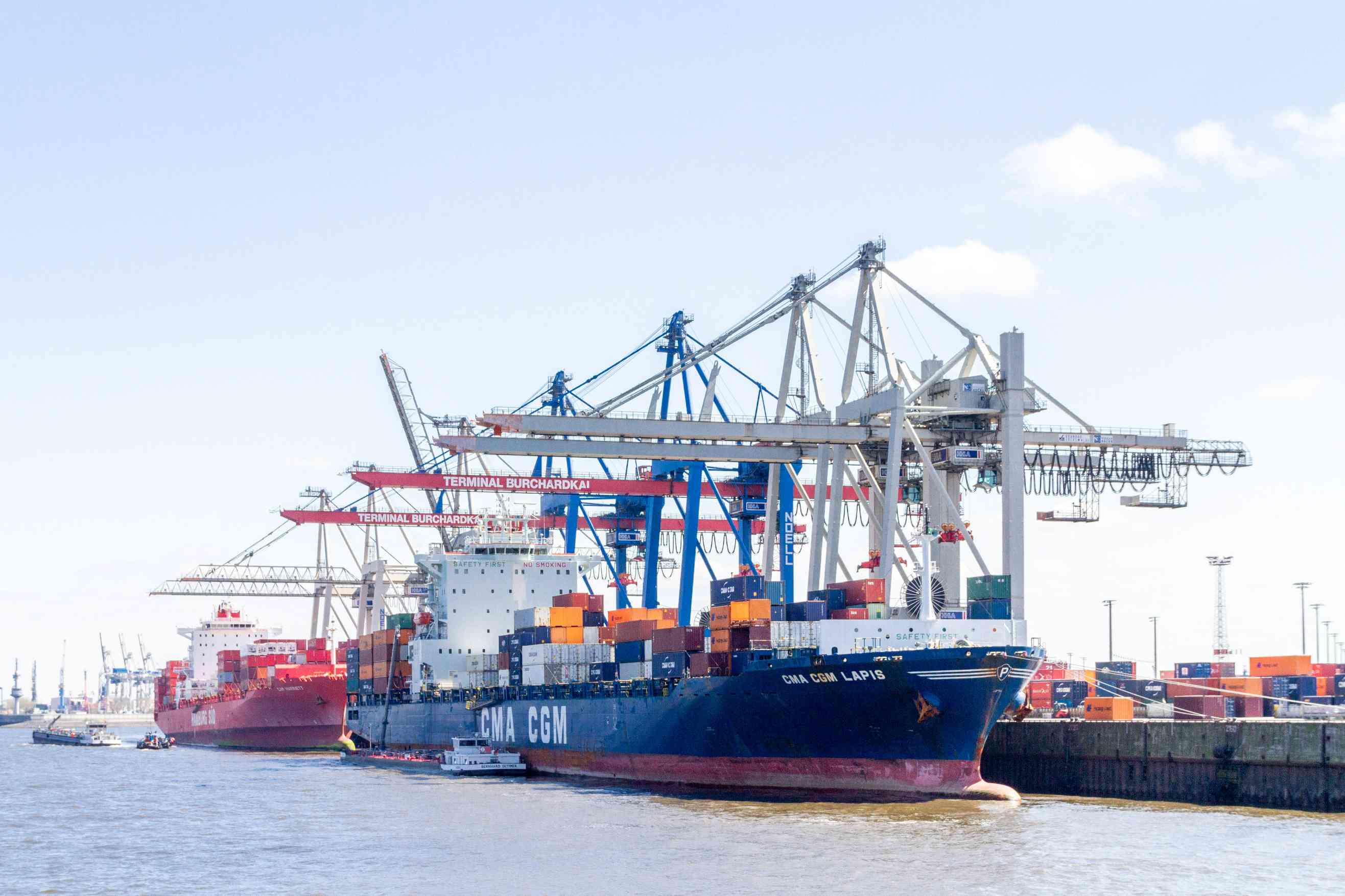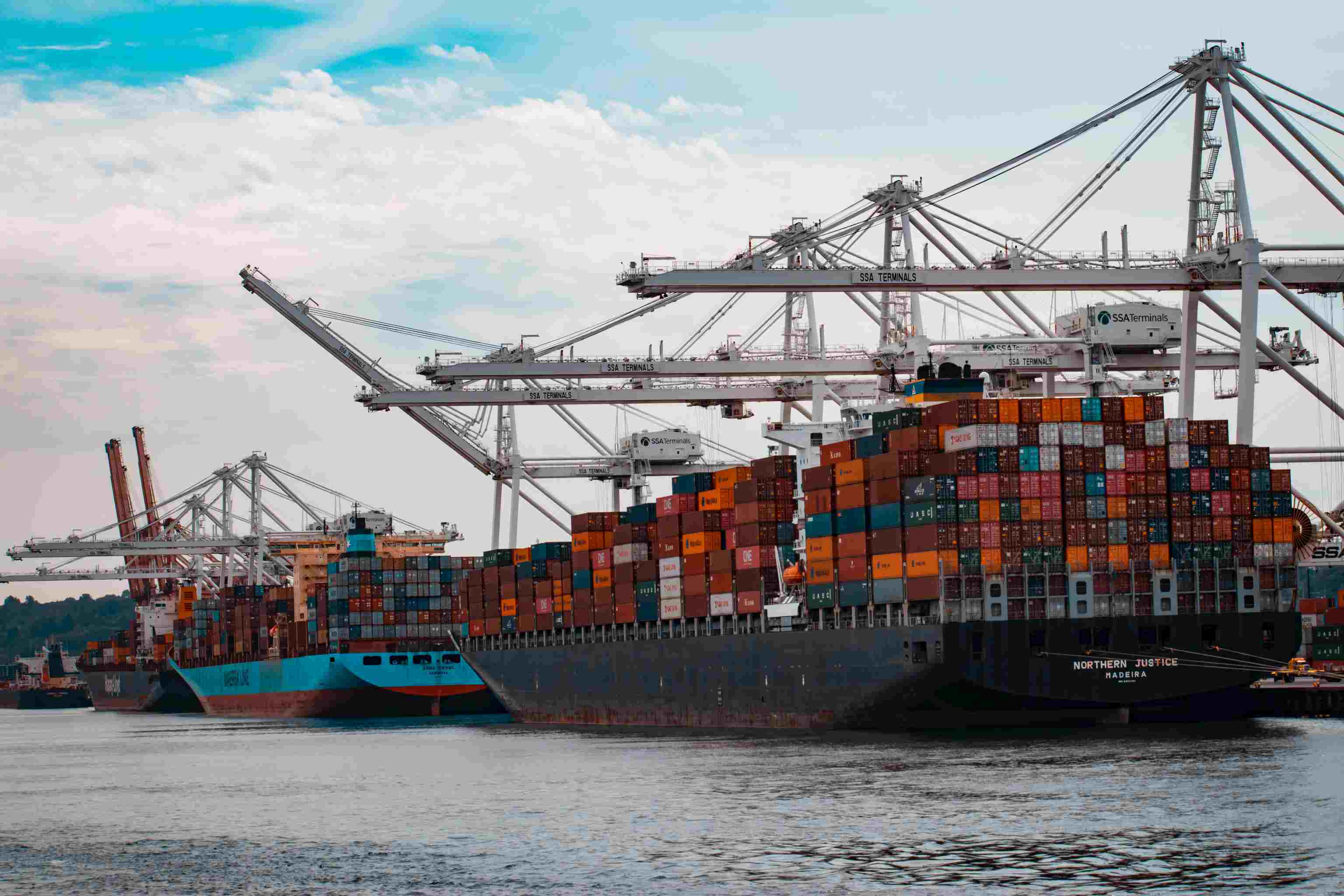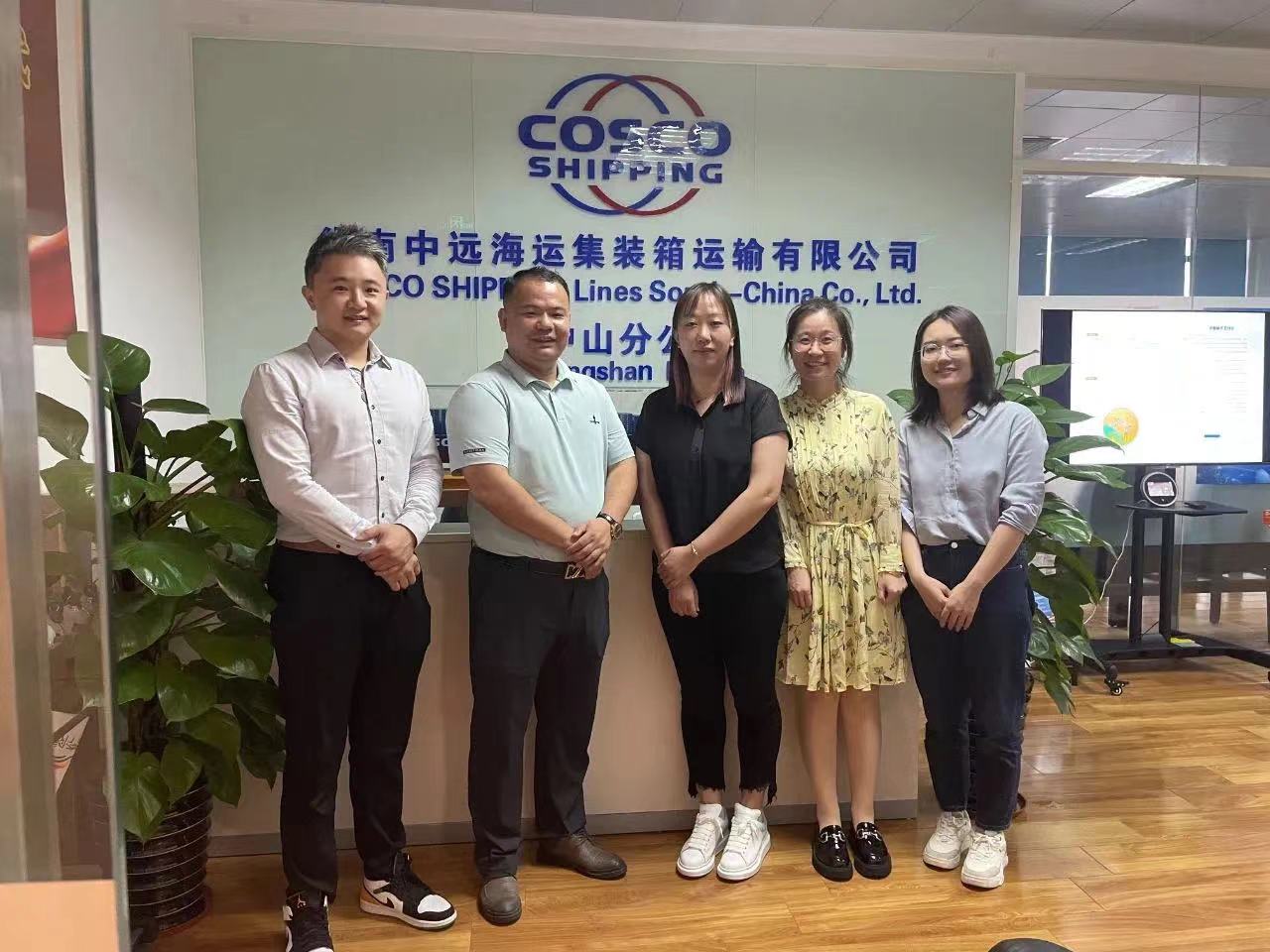No. 1 in cargo throughput in the world for 10 consecutive years, Zhejiang seaport begins new journey(Sea shipping)
Ningbo Zhoushan Port, the world's first cargo throughput for the 10th consecutive year and the world's first breakthrough of 1 billion tons, has 247 routes of various types, including more than 120 trunk lines, linking more than 600 ports in more than 190 countries and regions , To gather the mighty logistics, and fulfill the mission of "Hong Kong Connects the World and Serves the World". Now, along the "One Belt One Road" construction, the integration of the Yangtze River Economic Belt and the Yangtze River Delta, Zhejiang seaport has embarked on a new journey of "accelerating the construction of Ningbo Zhoushan Port into a world-class strong port and building a world-class port cluster". .
Change, Five Ports Combine into One
On the small Yangshan Island at the mouth of Hangzhou Bay, Yangshan Port, the main container port area of Shanghai Port, the world's largest container port, is busy. Not long ago, the preliminary draft of the project on the north side of the Xiaoyang Mountain, jointly developed by the Provincial Sea Port Group and Shanghai Port Group, has been released, and the approval process is underway. It is expected that construction can begin before the end of the year. On February 19 this year, the two "world champions" signed a cooperation agreement, which has become a solid step for the Provincial Seaport Group to implement the Yangtze River Delta integrated national strategy. The joint development of Zhejiang and Shanghai on the Yangshan Deepwater Port has also relied on administrative measures to move towards a new path of shareholding, marketization, and sharing.
Promoting "integration" with change has always been a strength of Zhejiang seaports. From the "Ningbo-Zhoushan Port" in 2006 to the "Ningbo Zhoushan Port" in 2015, although only a short bar disappeared, it is a symbol of the integration reform of the port in the province, reflecting the 10 most stories of Zhejiang seaports. year. "From the government's push for breakthroughs in institutions and mechanisms to taking capital as a tie to take into account the interests of all parties, and ultimately promote the substantial integration of the Oriental Grand Port, many links in the middle are 'first crabs'." As an important witness of the "Dagang Dream", Ningbo Jiang Wei, secretary of the board of directors of Zhoushan Port Co., Ltd., was filled with emotion.
In August 2015, Zhejiang Haigang Group was established and became the first provincial state-owned enterprise in China to intensively operate and manage port assets in the province. "Five-port-in-one" Haigang Group's shareholding structure finally confirmed 27.59% of the provincial SASAC, 60.84% of the Ningbo SASAC, and Zhoushan, Jiaxing, Taizhou, Wenzhou, and Yiwu SASACs accounted for 3.49%, 1.5%, 0.55%, 3.66, respectively %, 2.37%. In order to ensure the steady progress of integration, Zhejiang State-owned Assets Supervision and Administration Commission of Zhejiang Province, with the second largest shareholding, exercises voting rights, setting a precedent in the management of state-owned assets and the management and control of state-owned enterprises.
From asset integration to management integration, in November 2016, Zhejiang Haigang Group and Ningbo Zhoushan Port Group operated according to "two brands and a set of institutions", becoming the main platform for investment and financing of marine port resources development and construction in the province. Mao Jianhong, chairman of Zhejiang Haigang Group and Ningbo Zhoushan Port Group, described the new format of integration: "Five seaports are like five fingers, and the" five-port integration "is like a five-finger clenched clenched fist, more united and powerful. It can avoid duplication of construction, reduce vicious competition among each other, further coordinated development, and give play to their respective functional advantages, so that the province can plan a unified collection and distribution system and multimodal transport. "The big changes have released big dividends. As of last year, the total assets of the group Over 120 billion yuan, with net assets of 74.1 billion yuan.
Going forward, Zhejiang seaports that have entered the "post-integration" era will face challenges again. "The larger-scale integration of port resources is being staged. Speeding up the construction of world-class port clusters and strengthening strategic cooperation between ports in the Yangtze River Delta is already the meaning of the title of" Promoting the development of higher quality integrated development in the Yangtze River Delta region " It is also the only way to promote high-quality economic development in the Yangtze River Delta region. "Professor Song Bingliang, School of Economics and Management, Shanghai Maritime University, pointed out.
Opening up, transforming from a large port to a strong port
Recently, the world's largest container ship "COSCO Shipping Universe", with a maximum container capacity of 21,237 TEUs from Shanghai Port, docked at Ningbo Zhoushan Port penetrating the port area, and the bridge crane unloaded each box at the fastest speed. . At present, the port area is still expanding a 70,000-ton-class specialized container berth, which can increase the capacity of 620,000 TEUs in the future.
In such a scene of giant ships shuttle, roaring loading and unloading, all the docks in Ningbo Zhoushan Port are constantly working day and night. This important starting port of the Tang Dynasty Silk Road and an important foreign port during the Song, Yuan, and Ming dynasties have realized a gorgeous transformation from regional cargo ports (Ningbo) and fishing ports (Zhoushan) to world-class open ports during the reform and opening up. On average, more than 70,000 TEUs enter and leave the dock each day, far exceeding the volume of the whole year in the early days of port construction. Although the container business started late in Ningbo Zhoushan Port, it has developed rapidly and is moving at full speed towards the goal of 30 million TEUs in 2022.
On the afternoon of July 11, a Chongqing-Ningbo (Ningbo-Chongqing) import train full of auto parts, manufacturing equipment, and refrigeration equipment was launched from Beilun Port Station. It was realized on the basis of a total of 184 export trains since last year. Two-way heavy container transportation; the day also coincided with the opening of 100 double-decker container trains from Ningbo to Shaoxing. In order to seize the commanding heights of container transportation, in recent years, ports have actively created a major international logistics channel for sea-rail intermodal transportation, actively connected with important nodes in the central and western regions of the “Belt and Road”, and realized interoperability through multimodal transportation. At the same time, we will strengthen the advantages of logistics and resource aggregation along the “Belt and Road”, and actively explore the coordinated development of sea-rail transportation and river-sea transportation by taking advantage of the important fulcrum of the Yangtze River business and the advantages of abundant shipping resources. In March of this year, the Xi'an-Ningbo Zhoushan Port sea-rail intermodal train successfully launched, and it was efficiently connected with the Central European train "Chang'an", establishing a logistics channel for Ningbo and its surrounding areas to Russia, Central Asia, Central and Eastern Europe and other countries and regions.
As of now, Ningbo Zhoushan Port has 14 sea-rail intermodal trains, and 7 lines with monthly box capacity exceeding 5000 TEUs. Among them, Yiwu Train has become the largest sea-rail intermodal train in China. In the first half of the year, the total volume of container sea-rail combined transportation business was 385,600 TEUs, a year-on-year increase of 46.7%.
Adhering to its unique open gene, Ningbo Zhoushan Port, with its geographical advantages and integration bonus, has begun its journey of transition from "opening a big port" to "opening a strong port". The opening and connectivity of logistics facilities in Hong Kong and Hong Kong is the basic support for building an open and strong port. In February this year, Maersk, the world's largest liner company, and Meishan signed a letter of intent for investment, involving about 200 acres of second-phase logistics project land, creating a large-scale, intensive, automated international supply chain service platform, and providing an all-channel logistics supply chain. ecosystem. The Meishan Phase I logistics project under construction will be Maersk's first fully automated warehouse in the world.
Shi Minfu, Vice President of Maersk Group and CEO of Maersk Terminal Asia, said: "Since entering Ningbo in 1998, our container shipping volume at Ningbo Zhoushan Port has always ranked first among major shipping companies. In July 2013, Maersk Line The first 18,000 TEU 3E class ship made its first voyage. The first port of call on the Asia-Europe route was Ningbo Zhoushan Port. At present, Maersk has 39 container vessels calling each week. What I appreciate most is In the global port where Maersk Line's container capacity is 18,000 TEUs, this 'old friend' has always maintained ship-hour efficiency and berthing efficiency in the world. "
The open cooperation in commodity trade is the need to promote global trade liberalization and facilitation, and to build an open world economy. To this end, Ningbo Zhoushan Port is fully committed to building a world-class commodity storage, transportation, and processing base. Establish an international oil products storage, transportation and processing base, rely on Zhoushan Green Petrochemical Base and oil product storage and transportation bases, strengthen cooperation with international oil companies, and leverage the Zhejiang Free Trade Zone oil products storage and transportation transactions to become international; build iron ore Asia-Pacific distribution The center, relying on the layout of the iron ore wharf centered on Mouse Lake, will deepen the cooperation with foreign iron ore giants in mixed ore and expand the ore distribution. Today, 400,000 tons of ore ships have been berthing normally, and ore transfers and crude oil transfers have become new growth poles for bulk bulk cargo at ports.
Piloting, expanding the circle of friends in the port
Hong Kong Xingtong world, "Haise" continued a new chapter. The proposal of the “Belt and Road” initiative in 2013 brought new development opportunities to the port industry. Facing the busy main channel of the Pacific Ocean and backing to the most dynamic Yangtze River Delta economic circle in mainland China, Ningbo Zhoushan Port moved forward and actively built The best combination of the “Belt and Road”.
On July 11th, the 5th Hesse Port International Cooperation Forum was held in Ningbo, and the Oriental Grand Port once again sounded the "Port Friends Circle" rally. As a major platform for Hong Kong and shipping cooperation to connect with the “Belt and Road” summit, the Hesse Forum bears the epitome of Zhejiang ’s seaports ’in-depth expansion of the“ Belt and Road ”cooperation. The bright Zhejiang elements in the “Belt and Road” achievements list, such as the Dubai Station construction project and the “Hesse Port Cooperation Ningbo Initiative”.
The “Belt and Road” Dubai Station construction project is an open complex with functions such as logistics, commerce and trade, exhibition sales, and light processing. "The current group has established a project promotion team based on the construction plan and the" platform + subproject "construction operation model to coordinate related companies to form domestic platform companies." Mao Jianhong said that the project is positioning "Made in China" in the "Global Sales" distribution center and The main portal drives the growth of two-way trade and investment between Zhejiang and China and neighboring countries (regions) such as the UAE and the Middle East, East Africa, and Central Asia.
From the earliest support for the management and construction of the Saudi dry port, to the current Dubai through warehouse project and the “Belt and Road” Dubai Station landing, the signing of the cooperation project between China and Indonesia ... Zhejiang Port with Ningbo Zhoushan Port as the leader, is passing equity investment The “Belt and Road Initiative” is planned in the form of project development, etc. At the same time, through technical management output and business cooperation, it seeks multi-point applications with large international shipping companies, port operators, logistics providers, and traders to improve the international operation level of the port.
So far, Ningbo Zhoushan Port has established friendly ports with more than 20 ports along the “Belt and Road”. The number of “Belt and Road” routes has increased from 73 in 2013 to more than 90 today, and flights have increased from 3654 flights throughout the year. Up to nearly 5,000 flights, national ports along the route have achieved full coverage; the “Belt and Road” container throughput has also increased from 7.53 million TEUs in 2013 to 10 million TEUs in 2018, accounting for more than 40% of the total port containers.
Challenges never end. Facing the current situation of complicated external situation and the oversupply of the port industry as a whole, Mao Jianhong has long anchored in the general direction: Actively participate in the integration of the “Belt and Road”, the Yangtze River Economic Belt and the Yangtze River Delta, inward and outward expansion, and optimized layout. Operation, development and construction, finance, and shipping services "four major sectors" have developed as a starting point, promoting the "four global first-class" construction of port operation groups, creating an international first-class strong port and world-class port clusters, and accelerating the construction of the group into a port-based A core global leading integrated logistics service provider, promotes the construction of a strong marine province in Zhejiang, and promotes regional economic development.
"Big" promising Zhou Danjun
For ports that rely on scale effects to create value, the nature of the industry determines that only "big" can have the right to speak, and only "big" can make a difference. The "big" of Ningbo Zhoushan Port is a large port in the world, including the large volume of port operating equipment and large operating assets; the large area of the port area and the large throughput; the number of employees and the number of practitioners around the port business's upstream and downstream industries .
Big things can be promising, and they can be promising.
One of the bright spots: Ningbo Zhoushan Port is a bulk cargo flow hub in the Yangtze River Delta and the Yangtze River Economic Belt. Relying on the superior natural location conditions, Ningbo Zhoushan Port has an irreplaceable position in bulk cargo transportation. As the largest iron ore transfer base and crude oil transfer base in China, over 90% of the imported iron ore in the Yangtze River Economic Belt is transferred here; as an important coal storage and transportation base in East China, it is mainly imported coal for transit trade; at the same time, it is also national Important liquid chemical storage and transportation base and grain storage and transportation base. Holding "trump cards" such as ore, crude oil, and coal, and then leveraging policies such as the construction of the Zhejiang Free Trade Zone, if Ningbo Zhoushan Port can actively promote the implementation of relevant policies in the Free Trade Zone, it may become a key step to continue the miracle of throughput. .
There is a bright future: Ningbo Zhoushan Port is an important carrier and core initiator of Yangtze River Delta port integration. Reasonable port integration planning is the guarantee for the rapid development of Dagang. The establishment of Zhejiang Sea Port Group and Ningbo Zhoushan Port Group will undoubtedly provide an excellent model for the integration of other ports. This has also reduced the homogeneous and even vicious competition among ports in the province, and avoided redundant construction. The existing terminals can be used in a coordinated manner and a reasonable division of labor has greatly improved the efficiency of the terminals. Ningbo Zhoushan Port as a whole has really begun to emerge on the world stage. Facing the busy main channel of the Pacific Ocean, it is backed by the most dynamic Yangtze River Delta economic circle in mainland China, and it has obvious advantages such as water depth, siltation prevention, open land, and fewer days affected by typhoons. Following the development of Yangtze River Delta integration, Ningbo Zhoushan Port must become an important carrier and core initiator of Yangtze River Delta port integration.
